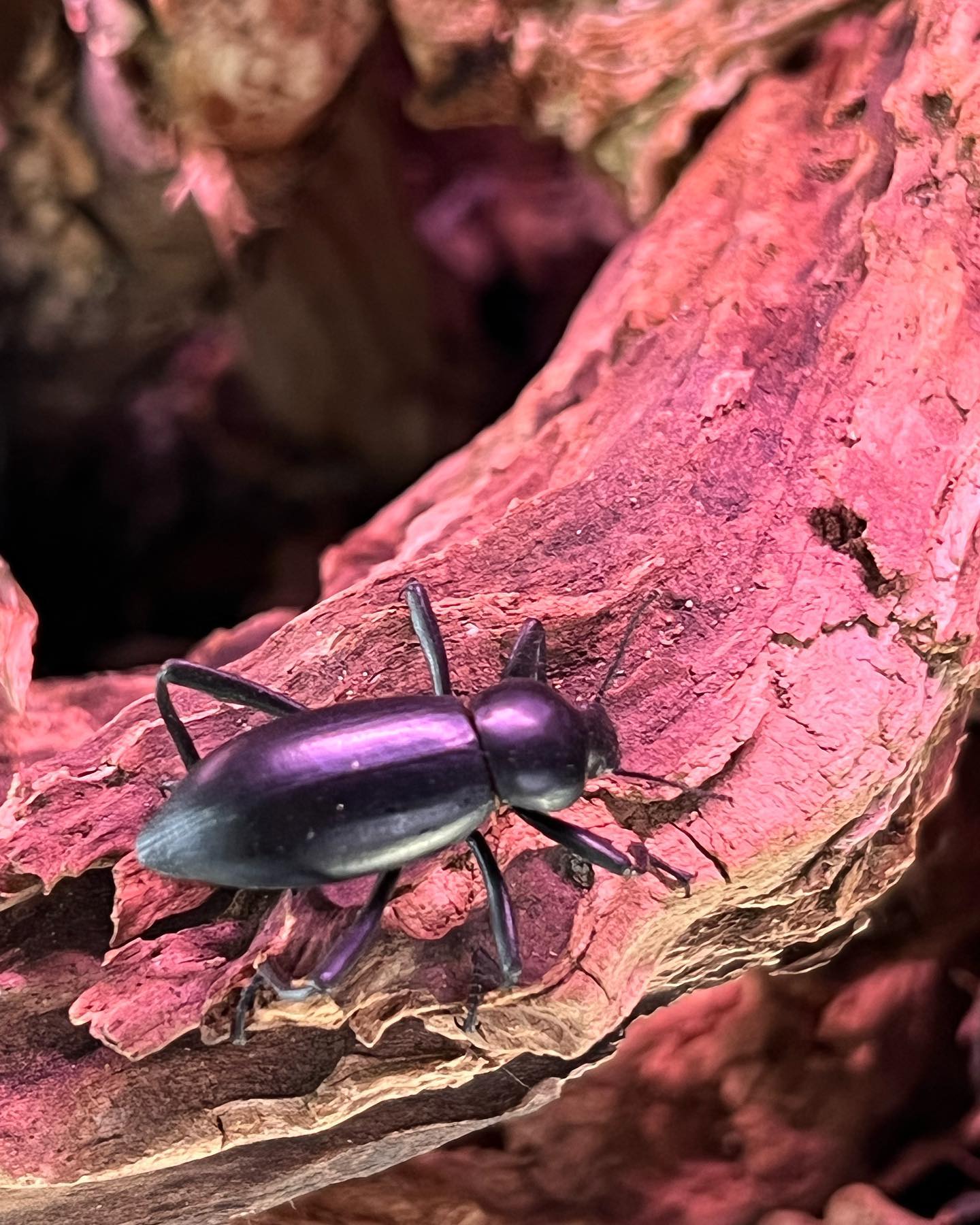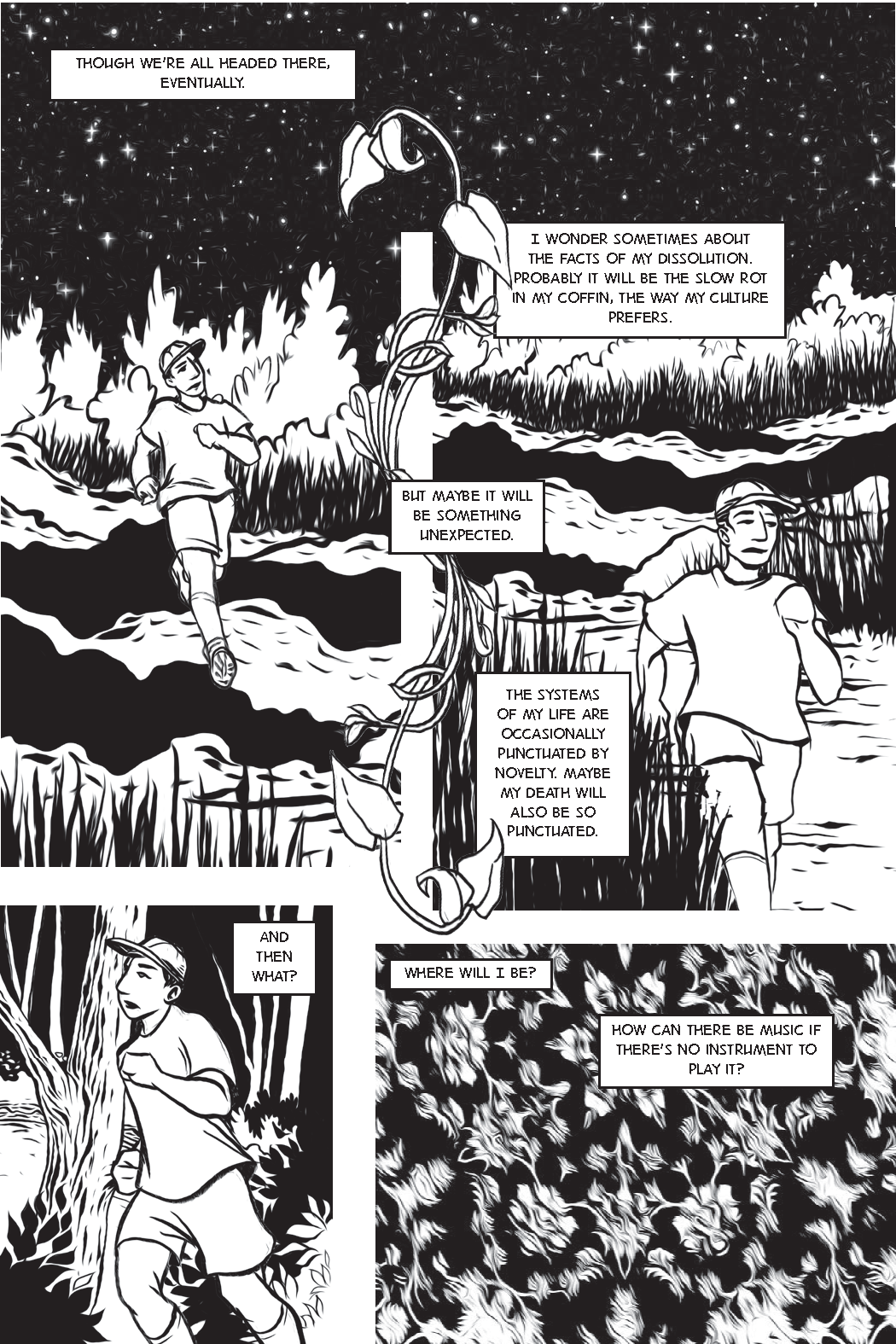On Not Having A Body



Meet Dave Huth. He loves beetles, salamanders, frogs and all creatures very small. Through the process community, I became friends with him on Facebook and began to notice the poetic way he shares his love for these creatures. Dave's passion comes through in his photographs, prose and art. I was already impressed with him for his unapologetic posts of bugs and our shared appreciation of strange looking succulents, but when I saw his art I was blown away. I know you will be too.
Dave is a teacher, storyteller, picture maker, and whistler of jaunty tunes. He shows us our world, woven with art, nature, philosophy, and experience. His passion for micro-nature makes him an exemplar for a process-aware way of being in the world.
He works as a professor of visual communication and media arts at Houghton College in western New York state, and is obsessed with finding new and effective ways to draw people into deep thinking and even deeper feeling about ecology and human life. Dave rarely mows his lawn or rakes the leaves – which keeps opinionated humans at a distance and draws all other animals close. This is just the way he likes it. He communicates about science and natural history using photography, illustration, and design – his method is a combination of traditional and digital techniques. Dave knows and lives in relational process.
Interview With the Artist
Dave, tell me about the little crawly creatures that you are passionate about and why you love them?
I like what shifts in reality when a secret is revealed. I like hidden treasures. When I was a kid, I really liked reading fiction. I thought it was incredible that I could look at a book, and have no idea what its story was. The story always felt close, right in front of me even, but still hidden. Even if I touched and held a book, sort of turned it over in my hands and flipped the pages . . . NOTHING. The story was completely invisible. A book is an inert object. But if I did this special, difficult, prescribed set of perceptual tasks – if I learned what “reading” is and then turned each page one at a time, and let my eyes scan the text line-by-line while my mind sat in that opened-up way you learn to hold your mind while reading . . . well then the story locked inside that object would somehow be released into my thoughts. It seemed utterly bananas that this is how books worked. But of course, over time, I discovered that’s how most of reality works. So I love tiny animals, because they’re like tiny books before you read them. They’re secrets. They’re basically perceived as inert objects until you go to the trouble to read them, and then suddenly they’re revealed to be these deeply moving stories and mind-blowing intellectual puzzles and all this incredible beauty and poetry and hilarious jokes. Obviously, anyone can see or hear a frog, but most people don’t know what a frog is, not enough to love it. I love frogs and other small creatures because I’ve been learning to read them.
Tell me how they inspire your drawings and graphic novels?
So I’m basically a communicator. I like to communicate about things that get me worked up emotionally. For whatever reason, it’s not enough for me to just think thoughts and feel feelings. I always want to share thoughts with other people. I want to know if anyone else feels these amazing feelings, too. So when I have some kind of encounter with a creature that I find surprising, or awesome, or sad, or terrifying, or hilarious, or whatever – pretty soon I start thinking about how I might be able to bring other people into a conversation about what I’m discovering. I guess this is where all the drawings and photographs and creative stuff comes from. I like communicating with people.
What is your creative process?
Lots of fiddling around and wasting time, letting my mind wander. Doodling. Combining things that aren’t often combined, just to see what happens. Repeating failed experiments. Watching Netflix and playing video games. Doing crossword puzzles. Napping, or walking, or walking someplace and then napping. Sadly, I don’t think there’s much of a process at work here. I’d probably feel a lot less stress if I had one. I struggle a lot with anxiety. This seems to make me procrastinate, which of course makes me more anxious. Why is this the way my life is? I have no idea. I must be responsible for it somehow. But I like what I make, so I don’t really have a plan to radically alter how I do things.
Do you find your art to be collaborative with the natural world?
Oh, no. A collaboration requires equal parties sharing a goal. The vast majority of the natural world I’m responding to is doing its own thing for its own purposes, and I have no idea if it’s even aware that I’m here, let alone is in any kind of collaborative agreement about what we’re making together. Instead, I see myself as more of a bizarre journalist. I’m reporting from the intersections of the world, where things are happening that I’m trying to perceive. I’ve learned something about some animal, or I’ve spent time in an ecosystem, or I’m in the middle of a conversation with fellow humans or other living beings – and I’m just sending out reports and dispatches about what it feels like. This might be a set of photographs, or some stories or paintings or who knows what? I can barely keep up with communicating all I’ve got running through my experience of the natural world. But I don’t think I’d exactly call it a collaboration.
Do you start with a story in mind or does it unfold as you create it?
Like everything else in my life that I value, these things unfold over time. I have to work in as flexible a medium as possible, otherwise I get frustrated quickly. Whatever it is that I’m making, it’s constantly in motion, constantly changing. I don’t really “finish” creative projects as much as I stop working on them.


















